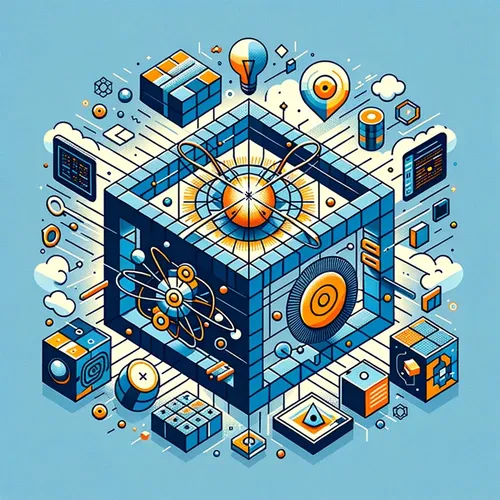Quantum Accelerators: Hybrid Computing's Diamond-Powered Dawn at ORNL
- Author
- Quiet. Please
- Published
- Fri 05 Sep 2025
- Episode Link
- https://www.spreaker.com/episode/quantum-accelerators-hybrid-computing-s-diamond-powered-dawn-at-ornl--67646432
This is your Quantum Computing 101 podcast.
A chilled hum fills the Oak Ridge National Laboratory’s data hall—a place where bits and atoms meet destiny. I’m Leo, your Learning Enhanced Operator, joining you for another episode of Quantum Computing 101. Today, I step right into the spotlight of a hybrid revolution—born just days ago in the very intersection of quantum and classical computing.
Walk with me: September sunlight flickers through the Tennessee trees outside ORNL, but the real energy is inside, where a collaboration with Quantum Brilliance is reshaping the landscape not just of computing, but of possibility. We’ve just witnessed the unveiling of a quantum-classical hybrid system—a fusion as elegant as a symphony, where a diamond-based quantum processing unit sits alongside your familiar CPUs and GPUs, their digital heartbeats synchronizing in parallelized workflows.
Let’s get technical for a moment. The Quantum Brilliance device isn’t a monolithic, fridge-sized quantum mainframe. Instead, think of it like a set of quantum “accelerators”—solid-state gems, literally diamonds, that operate at room temperature. Each QPU runs in tight parallel with classical supercomputers, allowing scientists to shuffle tasks like decks of cards: the classical handles the broad calculations, but the quantum steals the show for solving the mathematically intractable. Travis Humble, director at DOE’s Quantum Science Center, calls it “a new platform to explore advanced computing methods.” The mission: integrate quantum power directly into high-performance computing so seamlessly, so natively, that tomorrow’s breakthroughs become today’s everyday tools.
In practice, it’s kind of like building a Formula One team with both conventional and quantum engines under the hood. Some problems—like simulating the energy levels of molecules—remain stubbornly resistant to even the mightiest classical supercomputers. Here, the quantum engine fires up, chewing through quantum states in a way no transistor ever could. The day is fast approaching when thousands of these quantum accelerators pepper our supercomputing centers, the way GPUs now drive AI and graphics, marking the dawn of truly parallel quantum-classical problem-solving.
This week, as Albuquerque hosts IEEE Quantum Week, the world’s leading minds gather, dreaming of what happens when we blend genius hardware with flexible, portable software frameworks—a theme echoed by ORNL’s team, who envision their hybrid ecosystem as adaptable as evolution itself. The fact is, we don’t know yet what the “final” quantum computer will look like. But modular, dynamic integration means every paradigm shift—whether it comes from Google’s error-correction leap or Quantinuum’s billion-dollar expansion—gets woven into the ongoing fabric of computation, rather than tearing it up and starting over.
Much like today’s world—balancing stability with change, and tradition with innovation—hybrids are where the progress happens. As we chase qubits through diamonds and code, the deepest lesson is clear: the future is inevitably collaborative, and only by marrying quantum’s otherworldly potential with classical computing’s rock-solid dependability can we crack open nature’s hardest secrets.
Thanks for tuning in. Got questions? Curious about a topic? Send your ideas to [email protected]. Subscribe to Quantum Computing 101 and keep chasing the future with us. This has been a Quiet Please Production. For more, visit quietplease.ai.
For more http://www.quietplease.ai
Get the best deals https://amzn.to/3ODvOta
